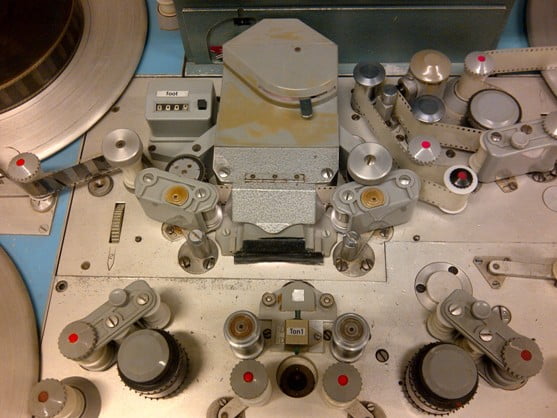
Watching a BBC television programme on the history of the UK and the European Union the other night (Europe: Them or Us), I noted the great amount of archive footage used and how skilfully it had been woven into the argument. I looked, as I always do on such occasions, at the credits, to see from where the footage had been taken, and who had been the researcher. Happily all of the archive sources were named and the likewise the researcher, Alex Cowan. Now I can remember him when he was just starting out in the business, probably in the late 1980s, and it got me to thinking about the overlooked art of the footage researcher, and how much they as a profession have contributed to history and culture.
For a good part of my own professional life, I have been lucky to have known many great footage researchers, some still in the business, some now working in other fields, and a few sadly no longer with us: Elly Beintema, Lisa Pontecorvo, James Barker, Jane Mercer, Aileen McAllister, Gerry Healy, Liz Heasman, Rosalind Bentley, Jack Amos, Judy Patterson, Declan Smith, Stuart McKay, Cy Young, Maggi Cook, Alex Cowan, Kathy Manners, Tony Dalton, Victoria Stable, Christine Whittaker, and many more. Some have crossed the barrier between footage research and production, such as Jerry Kuehl (The World at War), Lutz Becker (producer of documentaries on the rise of Hitler), Steve Humphries (oral and social historian turned filmmaker), Jonathan Lewis (The First World War), Taylor Downing (Flashback) or Adrian Wood (The British Empire in Colour and other ‘colour’ series). All have contributed greatly to some of the most intelligent and memorable programming of the past few decades.
Film is a time machine, or so it appears to be. It records the scenes and the sounds of the points in time in which it was created, and when played back it shows us those times. However, what we see is always coloured by our own times, so that what appears to be a fixed archive of the past is in fact ever-changing, because we the viewers must always change. This elusive history is what makes archive film so magnetic, though equally so frustrating – the vision of a receding truth. It is what has drawn a distinguished if largely unheralded band of people to devote their professional lives to uncovering its mysteries. We should do much more to praise them, and to learn from them.
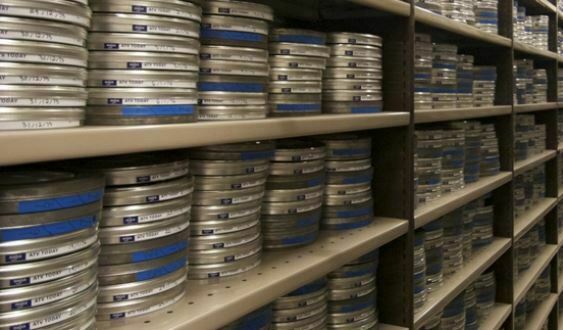
The footage researcher’s role in life lies somewhere between a poet and a drudge. Their job is to find films in archives that will illustrate the theme of the film on programme for which they have been commissioned to work. They have to find clips that either match what the producer had in mind, or that the script dictates, or they can find material that help shape the programme in a particular direction. They have to negotiate prices for the footage, to arrange the necessary rights agreements, and to deliver the purchased footage and paperwork to the production team. They have to know both history and film history, appreciating the importance of release dates, issue numbers, context, provenance.
Their role as part of that team varies from production to production. Some researchers – the most fortunate ones – are included at the start of the process and play a key in shaping the look and feel of the finished programme. Others – which tend to form the majority – are there on short contracts with a brief to provide just so much archive wallpaper, say three minutes for inclusion in a thirty-minute programme, and make sure what you get is cheap, with worldwide rights in perpetuity, in colour, and we must have something that no one else has seen before. And you’ve got two days in which to get it.
The latter is what helps destroy the soul of the researcher, though such commissions do at least help to pay the mortgage. Because each footage researcher is on a quest for the truth, and the greater the opportunity they are given, and the greater the trust the producer has in their skills, the more rewarding the quest will be.
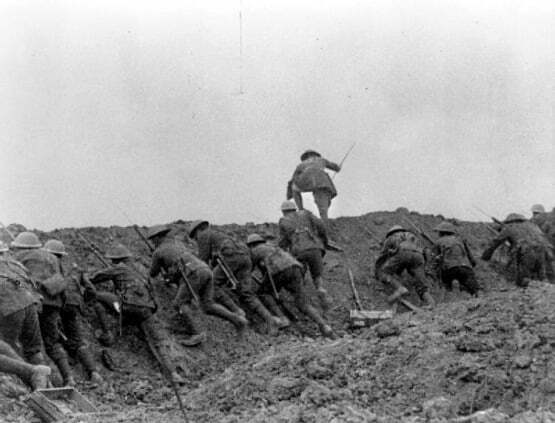
For it is not simply a case for finding a piece of film that matches a line in the script. Anyone can be handed a script where the Battle of the Somme is mentioned, and put in a phone call to the Imperial War Museum for that over-the-top trench footage that we have all seen so many times. The thrill lies in matching image to mood, historical truth to visual truth. This is where the art, and the poetry lies. Film is not reality; it is a reflection of reality. I used to think, in my early days as a film archivist, that the most important thing for an archive film programme was to have clips that showed exactly the events that they described; and the greatest crime was for a film to be shown that claimed to depict an event that it did not. The classic example is the battle of Jutland, the great naval war of 1916 and so an important subject for many programmes about the First World War. But there were no film cameras at Jutland, so how can any programme about Jutland that uses archive film be in any way truthful?
At a basic level, it is not possible. Stills can be used, or maybe fiction film clips, but should you make it clear that they are fictional? And if you use footage from another naval battle, should you tell the viewer? Does the viewer care? Quite possibly not – they just want to have the story well told. They are interested in another kind of truth, to which images and sounds are mere servants.
I’ve come to realise that insisting the clips must portray what they originally portrayed is a form of pedantry, and that poetic licence is not only a necessity but frequently a virtue. Films have useful meanings outside their original historical contexts, and it is this richness that makes them such useful tools for the researcher. Of course, we will prefer it if an archive film clips are what is said that they are – the power of knowing that what we are seeing actually happened and that the camera recorded it for us is considerable. But there are other forces at play, and managing these is where the great art of footage research lies.
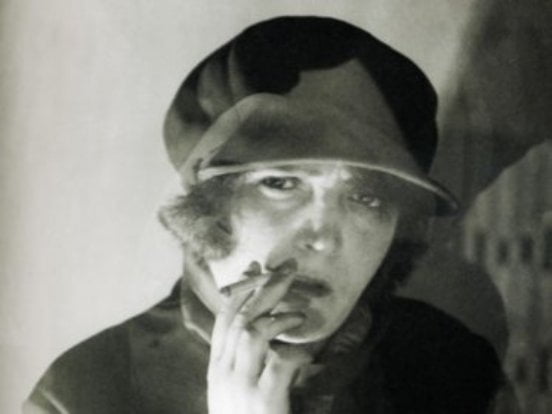
The assembling of pre-existing actuality film to create a new reality is nearly as old as film itself. Compilations at the start of the First World War, such as Charles Urban‘s With the Fighting Forces of Europe (1914), demonstrated what could be done with a footage library. Newsreel companies started to create literal compilations around such obvious topics as war, royalty and aviation, but such works merely collated the obvious. The person who demonstrated that here was a new art form was the Soviet film editor Esfir Shub, creator of such compilation films as The Fall of the Romanov Dynasty (1927) and The Russia of Nicholas II and Lev Tolstoi (1928). Shub created both art form and method. She sought out every possible footage source, uncovering collections no longer thought to exist, rescued film stored in damp conditions where the emulsion was already peeling away from the base, assembled her material before making her selection, catalogued it all, then chose precisely according to her theme (while letting the quality of the footage help determine the final form). The task, and the principles involved, have remained the same ever since.
Compilation films grew in number as an awareness of the potential of a history told through film grew, along with the burgeoning of the newsreel archives over time. Notable examples between Shub and the rise of television include The March of Time news magazine series (notable for its contentious combination of actuality, archive and re-created actuality), Frank Capra’s Why We Fight series (1943) made for the US War Department, Nicole Védrès’ Paris 1900 (1947), Alain Resnais’ Nuit et Brouillard (1955) on the Nazi concentration camps, George Morrison’s Mise Éire (1959) on Irish nationalism, and Erwin Leiser’s Den Blodiga Tiden, or Mein Kampf (1961), on the Third Reich.
It was television, however, which brought the archive compilation film to the fore. It was able to widen the range of subjects, broaden the audience, and allow for extended treatment of a theme through multiple episodes. Epic series such as the BBC’s The Great War (1964) and ITV’s The World at War (1973-4) used archive film to overpowering effect. However the reaching for effect brought controversy. The Great War‘s use of fiction film clips mixed in with actuality, and its notorious choice to flip some film so that the Allies were always fighting from the left and the Germans from the right, helped encourage a new school of academic and film historians – Nicholas Pronay, Anthony Aldgate, Paul Smith, Arthur Marwick – who became fascinated by the “arranged reality” of such films – to use a phrase suggested by Jay Leyda in his great book Films Beget Films, published in 1964 and I think still unique in taking the compilation film as its subject.
Audiences didn’t care about how the film had been manipulated – unless they could tell it had been manipulated. But those who did care were the academics who wanted to know what sort of evidence film offered, and with them a new breed of film professional, the footage researcher, whose task it became to find film that would tell honestly the story that had to be told. They absorbed themselves in histories; got to know every archive, public, commercial and private, in many countries; scoured catalogue cards and shotlists for what they revealed and what they had left out; spent hour after hour hunched over Steenbeck table viewers, poring over films forwards and backwards; papered up sections ready for telecine transfer; and gradually built up a vast knowledge of how the twentieth-century had been recorded and preserved on film, with the understanding of how such footage could be re-arranged to be made meaningful again. From this knowledge came such great series as Out of the Doll’s House (1988), Forbidden Britain (1994), People’s Century (1995) and The First World War (2003) – and further afield the work of America’s Ken Burns and France’s Serge Viallet.
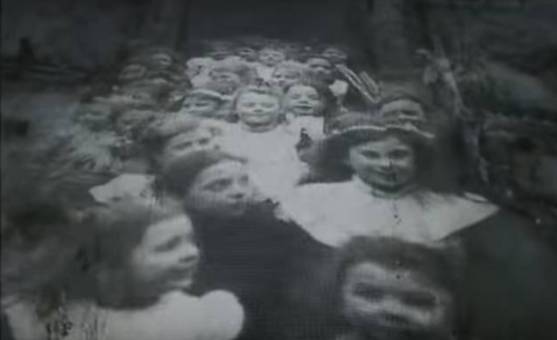
People’s Century represented perhaps the peak of the archive compilation series, with its thrilling coup of showing archive film of an ordinary person in extraordinary times, then cutting to that person speaking today, located by some ingenious researcher. It brought home the reality behind the arranged reality. But audience tastes were changing. Producers turned to recreations with actors, colourisation of monochrome footage, and the use of star presenters who just had to stand in a battlefield and conjure up pictures for you with words (who needs archive of Jutland when you can just stick Dan Snow on a boat in the North Sea and get him to point to where the two fleets were arrayed?)
At the same time, online footage libraries started popping up everywhere, and locating footage no longer seemed like a job requiring time, skill or taste. Anyone could do it. Archive producer Jerry Kuehl writes a column in the footage business journal Archive Zones on the the misuse of archive film by unthinking producers – it’s called ‘The Office Cat’, because who else do you need to track down footage? The Office Cat loves to point out footage howlers – military hardware in use years before it was invented, films purporting to show events where it known no film was taken, indeed films showing events before film was invented. I don’t always agree with such complaints – as I’ve tried to argue, there are truths that lie beyond historical truths, but there is a general slovenliness in the use of archive film by some that would never be tolerated for textual sources.
Jerry Kuehl explains the background to one of the most renowned examples of misuse of footage, the Titanic, for his YouTube series Kuehl’s Reels
Happily colourisation and re-enactments seem to have been a passing phase, and while presenter-led history television remains common, there has been a modest resurgence of the responsible use of archive footage in programmes. This has been encouraged in the UK by the social history programming nurtured by specialist channel BBC Four, which has demonstrated that audiences prefer archive film when it draws attention to itself. The days of the epic historical series with hours of archive film meticulously researched and contextualised seem over, but new footage continues to be unearthed (such as the opening up of Russian archives, or the spectacular discovery of collections such as the Mitchell & Kenyon archive of Edwardian working class life) and archive compilation films are looking fresher than ever. There is a growing taste for archive films arranged for art’s rather than history’s sake, from the haunting reveries of John Akomfrah (Mnemosyne, aka The Nine Muses) to Penny Woolcock’s collaboration with the band British Sea Power, From the Sea to the Land Beyond.
So hopefully there is still work out there for the footage researcher, even in the era of YouTube. But more should be done to appreciate the work that they do. There should be serious study made of the role of the footage researcher. The complex relationship between the original meanings a film had, and the meanings it accrues through being shown again in a new context, and the footage researcher’s role in negotiating this transference, demands a deeper appreciation. It is not just the re-arrangement of reality; it is the poetics of the profession that intrigue me.
Of course they are working on behalf of producers, and it is the latter who determine what the finished programme will say and how it will say it. But only the footage researcher knows the secret history of the films they have found, bridging the world between the vault and the screen. They know the meanings lost in the transference, as much as the meanings gained. Above all they know that their work creates a kind of history like no other – impressionistic, emotional, elusive but persuasive. We should be understanding it better.
Links:
- Many of the footage researchers working today (chiefly in the UK) can be found on the directory of FOCAL International.
- Three key books on the use of archive film for the understanding of history are Jay Leyda’s above-mentioned Films Beget Films (1964), Paul Smith (ed.), The Historian and Film (1976) and Richard Howells and Robert W. Matson (eds.), Using Visual Evidence (2009). To the best of my knowledge, no book has ever been written about footage research itself.
- The International Association for Media and History (Iamhist) brings to gether historians, film historians, footage researchers and media producers interested in the relationship between film and history. It produces an excellent journal, the Historical Journal of Film, Radio and Television.
- An example of the kind of stock footage site designed for easy, instant access to archive film for the busy producer is Footage.net.
I’m really excited to see the interest in the process and art of footage research and enjoyed this article very much. I am a film archivist and am currently working on a research project that looks at how producers and footage researchers find, engage with, and reuse archival moving image collections and am hoping to connect with people who are interested in being interview participants in 1-hour compensated interviews. If you are interested in participating, please contact me at laura.treat@unt.edu.
Sure enough, the TV documentaries on Jutland have used plenty of archive footage that isn’t of Jutland, while the BBC’s Battle of Jutland: The Navy’s Bloodiest Day did indeed feature Dan Snow in a boat – but plenty of archive film and photographs too. The photos were genuine. You don’t mess around with photos.